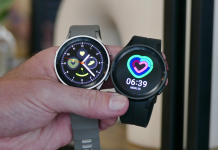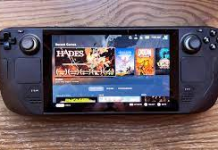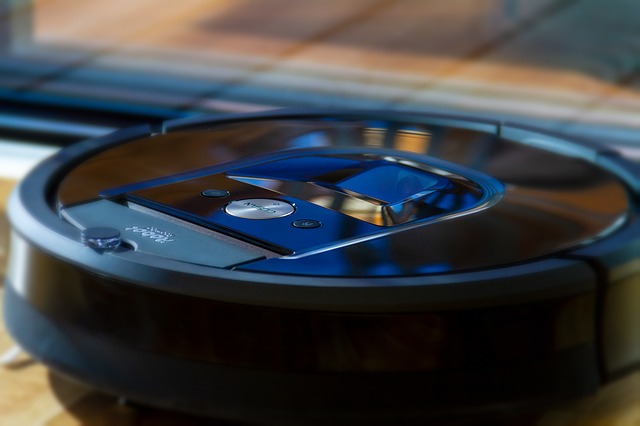Robot vacuums are no longer confined to Jetsons-style midcentury dream homes or the pages of science fiction. They are quite real, daily appliances that can do your household chores. Many of them, in fact, have advanced features like electronic sensors, lasers, CPUs, and AI-enhanced software.
The best robot vacuums are also adaptable. They can maintain the pristine condition of bare floors such as hardwood and tile, as well as area rugs and carpets. Some even have suction that rivals that of handheld vacuum cleaners. However, as cool as they are, robot vacuums are more expensive than ordinary vacuums: Some of the higher-end models can cost up to four figures.
You don’t have to spend a lot of money, but you get a lot in return. Self-emptying dustbins, the capacity to map several rooms and floor plans, robust cleaning and suction power, as well as smartly built hardware, are all included.
We put a collection of 18 robotic vacuums through their paces for over 120 hours, assessing suction power, capacity to clean carpets, hardwood floors, and other hard flooring types, targeted spot cleaning, and performance during each cleaning cycle.
Brand-new models that debuted in 2021, flagship models from businesses like iRobot, Samsung, and Neato, and enticing options available across a variety of online shops are among them. I didn’t include older models that aren’t expected to be sold for long. As new models become available, I’ll continue to update our best robot vacuum list so you can pick the best vacuum for your home.
Roomba S9 Plus By iRobot
This is the robot vacuum to get if you were given a blank check and told to buy the best robot vacuum. Roomba vacuum cleaners are highly popular, and this is my selection for the finest of them all. The iRobot Roomba S9 Plus, on the other hand, has a hefty price tag of $1,100 (though it is occasionally discounted). This robotic vacuum combines high suction and excellent dirt and dust removal for that astronomical price. If money isn’t an issue, it’s one of the best robot vacuums available.
This Roomba gathered up 93 percent of our test sand on hardwood floors, the second-highest percentage in our test group. On that test, the Neato Botvac D7 still wins with 95 percent sand removal. However, its performance on carpets was underwhelming. On low-pile carpets, it got 36% and on mid-pile carpets, it got 47%.
The Roomba S9 Plus also struggled to clean sand from low-pile carpeting, picking up only 28% of dust and sand on average. While it’s not the worst score we’ve seen (the Ecovacs Deebot 600 comes in at 18 percent), it’s certainly at the bottom.
However, while vacuuming, the Roomba S9 Plus removed an average of 71 percent of sand from our medium pile carpet, which is the best result we’ve seen in this test. It also removed more dog hair, pet dander, and allergies than any other vacuum in the study. The S9 Plus can travel and map numerous rooms and floors while avoiding designated “keep-out zones.” You can even order the app to start cleaning a room using Alexa or Google Assistant commands. You can also connect the S9 Plus to your home Wi-Fi.
The robot also whizzed through our test room in under 25 minutes on average. The CleanBase docking station for the Roomba S9 Plus is the best of all. The dock simultaneously charges the robot’s battery and empties its dustbin, making cleaning even easier and eliminating the need to worry about battery life. That’s very convenient. Read our initial thoughts on the Roomba S9 Plus.
S7 Roborock
The Roborock S7 is our new favorite midrange robot vacuum, because to its low pricing, rock-solid performance, and clever navigation. It had nearly the same ability to remove sand from hardwood floors (92.8%) as the Roomba S9 Plus (93%) and Neato D7 (93%) robot vacuums (95 percent).
Unlike our previous midrange robot vacuum recommendation, the Neato D7, the Roborock S7 proved significantly better at removing sand from both medium-pile (50.4 percent) and low-pile carpets (64.2 percent). On those tests, the Neato D7 scored 36 percent and 47 percent, respectively.
The Roborock didn’t quite equal the Roomba S9 Plus when it came to removing pet hair, but it did better than most. The S7 completely removed all hair from hardwood floors, leaving only a few stray tufts on carpeting.
Navigation is the S7’s strong point, thanks to several sensors and lasers. The vacuum cleaner took an average of 16 minutes to vacuum the whole floor of our test room. That’s 9 minutes less than the Roomba S9 Plus demanded (25 minutes).
The sophisticated mopping capability of this robot mop vacuum is another characteristic that sets it apart. Fill the machine’s reservoir with water, then attach the mopping pad that comes with it. On order, the S7 will now mop the floor.
By raising and lowering its mopping pad, it can even mop and vacuum carpets in the same cleaning cycle. To do so, it first runs a mapping operation to determine the location of your carpets. Sensors are then used by the robot mop vacuum to validate the existence of carpeting where it expects to find it.
RoboVac 25C By Eufy
You would not anticipate enough cleaning power from a budget robot vacuum, but the Anker Eufy RoboVac 25C does just that. Its capacity to scour sand off hardwood floors with suction power (78.9%) wasn’t far behind the Roborock S7. The sand performance of the Eufy RoboVac 25C was also good on low-pile (53.5%) and medium-pile (52.2%) carpets.
This robot was also really good at removing pet hair. It yanked everything from our hardwood test floor save one tuft. After vacuuming low-pile carpets, multiple tiny tufts of hair remained. The Eufy found medium-pile carpets to be the most difficult to clean. After the vacuum passed over this area, many more and larger clumps of hair remained.
The navigation system of the RoboVac is one area where Anker saved money. The gadget bounces around the floor like a ping-pong ball in slow motion, changing course when it comes across an object or impediment. As a result, in our test room, it took 91 minutes to complete its cleaning cycle.
Roomba J7 Plus By iRobot
Robot vacuums and solid pet waste don’t mix. If they do, the consequences are almost always disastrous. With its new Roomba J7 Plus, iRobot set out to address this possible issue. The software in this robot is designed to detect solid pet excrement on the floor and steer clear of it.
Anecdotal lab tests validated the J7’s ability to avoid waste. Within the constraints of a test pen, the robot cleaned open areas with ease and never touched any of our solid pet waste replicas. To portray the foul stuff, we used three pieces of hoax dog poop in various forms.
The Jet Bot AI Plus, another robot vacuum, is similarly advertised as being able to prevent pet waste. Unfortunately, one of our three gag poop objects was continually missed by the robot. It wouldn’t just brush up against the thing for a few seconds. The machine would frequently push the synthetic excrement from one end of the test pen to the other. In the actual world, that’s a formula for poopocalypse.
On hardwood floors and low-pile carpets, the Roomba J7 performed admirably, removing 91.7 percent and 58.5 percent of test sand, respectively. When vacuuming medium pile carpets, however, the robot struggled, removing only 17 percent of the sand.
The Roomba J7 didn’t seem to be slowed down by keeping an eye out for pet waste. In just 17 minutes, the robot had successfully covered our test room. Pet hair on carpets was also not a problem for the Roomba. Hair on hardwood, on the other hand, was an issue. During this test, the Roomba robot vacuum left around half of the material on the floor.
The Roomba J7 Plus, like its more expensive sister, the Roomba S9 Plus, can empty its own dustbin. The CleanBase docking station for the robot charges it while also vacuuming it clean.
Frequently Asked Questions about Robot Vacuums
What Is The Mechanism Of A Robot Vacuum Cleaner?
Robot vacuum cleaners are designed to travel your home and clean your floors autonomously, eliminating the need for you to do so. They can clean when you want them to, on a schedule, and even when you aren’t at home. The robot, which is powered by rechargeable batteries, usually sits on a charging port to replenish its energy supply. Premium variants have docking stations that can empty the robot’s dustbin when it fills up.
When It Comes To Robot Vacuums, How Long Do They Last?
Robot vacuums are more complex machines than regular vacuums, with more moving parts, electronics, and software. Even yet, with regular maintenance and replacement parts like batteries, brushes, and filters, these devices can outlast typical vacuums. This item should last for several years.
Keep in mind that most manufacturers offer a one-year limited warranty on their robots that covers both parts and labour. Examples include IRobot, Neato, and Samsung.
How Effective Are Robot Vacuum Cleaners?
Many things influence how well a robot vacuum cleans your home. Obstacles on the floor, such as wires, charging cords, toys, shoes, and clothing, can halt robots in their tracks. A robot will perform better if there is less general clutter. Some robot vacuum models are better at cleaning tile, wood flooring, and other types of carpet than others.








